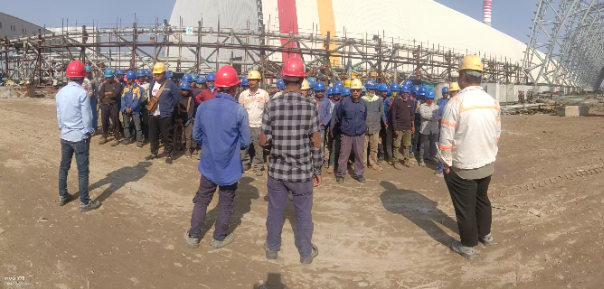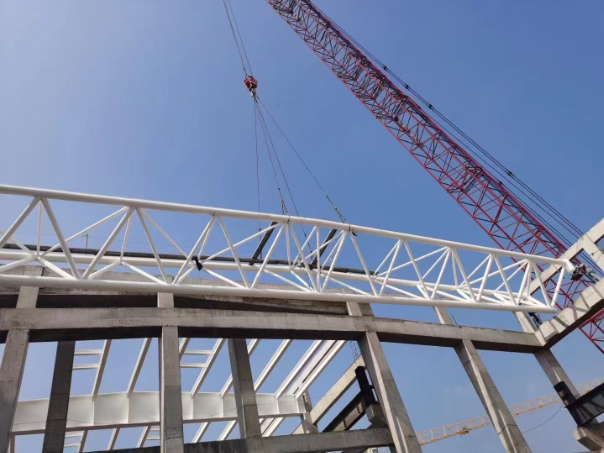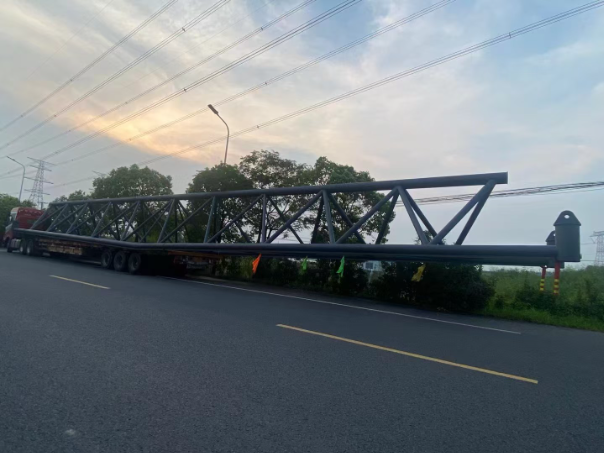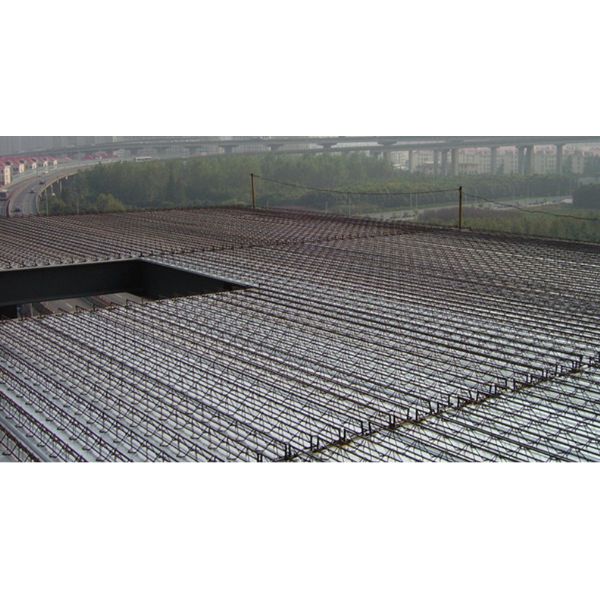Steel Structure FactoryProject Overview
Steel Structure Factory delivered in Libya, completed in
December 2024. Engineered for high throughput and long-term durability,
the facility integrates a modular portal-frame system, efficient building envelope, and
streamlined MEP coordination to support continuous industrial operations. The project
consumed 1,450 tons of structural steel and stands as a benchmark for
fast-track, quality-assured delivery in North Africa.
| Key Fact | Detail |
|---|---|
| Location | Libya |
| Steel Usage | 1,450 tons |
| Completion | December 2024 |
| Primary Structure Type | Portal rigid frame with braced bays |
| Cladding | Insulated metal roofing and wall panel system |
| Intended Use | Manufacturing, storage, and ancillary administration |
Client Objectives & Functional Requirements
The client required a robust Steel Structure Factory optimized for
heavy-duty manufacturing lines, high-density racking, and flexible expansion. Key
functional goals included large column-free spaces, fast erection, energy-efficient
enclosure, and provisions for overhead cranes and conveyor systems. Operational safety
and maintainability were prioritized alongside adaptability to future equipment upgrades.
- Large clear spans to enable uninterrupted production flow.
- High live load capacity for machinery and storage systems.
- Efficient logistics: wide bay spacing, high eaves, and multiple dock positions.
- Thermal performance suitable for Libya’s climate to reduce energy costs.
- Scalable layout with reserved foundation pads and extension joints.
Scope of Work
The scope covered concept development, structural analysis, shop detailing, steel
fabrication, anti-corrosion treatment, logistics, on-site assembly, and commissioning
assistance. Responsibilities extended to envelope engineering, daylighting concepts, and
coordinating interface points for MEP and process equipment.
Design & Engineering
- Portal-frame system with wind and seismic bracing strategy.
- Crane runway integration and mezzanine options in select bays.
- Foundation interface coordination and anchor bolt setting plans.
Fabrication & Supply
- Cutting, welding, drilling, and trial assembly of primary members.
- Fabrication of secondary steel, purlins, girts, and bracing.
- Supply of insulated roof and wall panels, trims, gutters, and accessories.
Construction & Handover
- On-site erection, quality checks, and alignment surveys.
- Cladding installation, flashing, and weatherproofing validation.
- Final inspection, as-built documentation, and O&M handover.
Structural System & Materials
The primary system employs a portal rigid frame with tapered columns and rafters,
selected for excellent stiffness-to-weight performance and fast assembly. Braced bays
provide lateral stability, while the roof purlins and wall girts deliver efficient load
distribution to the main frames. The design philosophy focuses on modular repetition,
minimizing fabrication complexity while ensuring performance margins for crane loads and
environmental actions.
Steel Grades & Connections
- Structural members designed to applicable international standards (e.g., Eurocode/IBC as specified by the project).
- High-strength bolts for primary moment connections; preloaded bolts where fatigue resilience is beneficial.
- Welded built-up sections for main frames; cold-formed or hot-rolled sections for secondaries.
Building Envelope
- Insulated metal roof with thermal breaks and high-reflectance finish.
- Insulated wall panels with concealed fasteners for a clean façade.
- Daylighting via skylight strips and polycarbonate wall lights where practical.
Design Loads & Performance Criteria
The factory is engineered to resist wind, seismic, and thermal actions appropriate to
Libyan conditions, with checks for serviceability (deflection, vibration) and ultimate
strength. Crane runway beams and columns are sized for dynamic wheel loads, impact, and
lateral surge. Roof purlins meet load combinations for wind uplift and maintenance live
loads. Envelope assemblies are tested for air and water tightness to protect production lines.
Key Performance Targets
- Serviceable deflection limits for rafters and purlins to protect cladding integrity.
- Drift control in braced bays for equipment alignment and crane performance.
- Thermal resistance and solar reflectance to reduce HVAC energy demand.
Fabrication, Finishing & Corrosion Protection
Precision fabrication ensured dimensional accuracy prior to shipment. Quality gates covered
material traceability, fit-up, weld sequencing, and NDT where specified. Surface preparation
achieved the required cleanliness for long-term coating adhesion. The corrosion protection
system was selected to match the project’s coastal exposure risk and maintenance strategy.
Typical Finishing Options
- Abrasion blasting to specified cleanliness class before coating.
- Multi-coat epoxy/polyurethane paint system or hot-dip galvanizing for select members.
- Touch-up and holiday testing after erection to seal the system.
Construction Methodology & Site Logistics
The project’s construction plan was optimized around rapid, safe assembly. Pre-erection
meetings aligned lifting sequences, access routes, and crane positions. Erection followed a
bay-by-bay approach: columns set on levelled base plates, rafters lifted and bolted, followed
by bracing, purlins, and girts. Cladding teams worked behind the steel crew to close in the
building quickly and protect interior works from weather.
Erection Sequence Highlights
- Survey and anchor bolt verification.
- Column stand and rafter lift to form the first frame.
- Installation of temporary bracing, then permanent bracing and secondaries.
- Progressive cladding, roof safety lines, gutters, and downpipes.
- Door systems, canopies, and final weatherproofing details.
Project Timeline & Milestones
The Libya factory was handed over in December 2024. The schedule balanced
parallel fabrication and foundation works to compress overall duration without compromising
safety or quality. Early procurement of long-lead items, standardized detailing, and modular
packaging simplified logistics and site handling.
Key Milestones
- Concept & Preliminary Design: Completed and approved for detailing.
- Shop Detailing & Review: Issued for fabrication with clash checks for MEP tie-ins.
- Fabrication & Coating: Sequenced by erection priority; QA/QC at each gate.
- Shipping & Site Mobilization: Optimized containerization and route planning.
- Steel Erection & Cladding: Rapid bay-by-bay assembly to achieve dry-in.
- Final Inspections & Handover: Practical completion achieved in December 2024.
MEP Interfaces & Process Integration
The factory structure includes coordination zones for mechanical ducts, chilled-water lines,
electrical busbars, and cable trays. Roof penetrations and wall sleeves were predefined during
detailing to avoid rework. Crane electrification systems and future conveyor tie-ins were
allocated clearance envelopes and reserved openings.
Operational Provisions
- Service catwalks and platforms with compliant guardrails.
- Roof safety lifelines and anchor points for maintenance.
- Equipment pads at grade and embedded inserts for later upgrades.
Safety, Quality Assurance & Compliance
A comprehensive HSE plan governed lifting operations, work-at-height procedures, and traffic
management. Quality was enforced through inspection test plans (ITPs), mill certificate
verification, bolt tension checks, weld inspections, and alignment surveys. Documentation
included method statements, risk assessments, daily toolbox talks, and incident tracking to
promote continuous improvement.
Documentation & Records
- Material traceability and coating batch records.
- Bolt tightening logs and calibrated tool certificates.
- As-built drawings and O&M manuals for handover.
Sustainability & Energy Performance
The Steel Structure Factory prioritizes environmental responsibility.
Steel’s recyclability, combined with high-reflectance coatings and insulated panels,
reduces operational carbon over the building’s life. Natural lighting strategies further
cut energy demand, while modular bays simplify future alterations without material waste.
Environmental Measures
- High SRI roof finish and insulated envelope for thermal efficiency.
- Daylighting to reduce artificial lighting during daytime operations.
- Design for disassembly and reuse where feasible.
Maintenance Strategy & Lifecycle Value
The building is designed for long service life with straightforward maintenance. Coating
systems are selected for the local environment, and access provisions allow safe inspection
of roof, gutters, and crane runways. A preventive maintenance schedule helps retain asset
value and minimize downtime.
Recommended Maintenance Intervals
- Quarterly: Visual checks of gutters, downpipes, sealants, and fasteners.
- Biannual: Coating touch-ups and inspection of crane runway alignment.
- Annual: Comprehensive envelope inspection and re-sealing where required.
Value Delivered to the Client
By leveraging modular engineering and meticulous coordination, the project delivered a
reliable production environment with controlled lifecycle costs. The client benefits from
a flexible structural grid, fast expansion capability, and an energy-conscious envelope
that supports efficient operations in Libya’s climate.
- Rapid delivery with assured quality.
- Lower operating costs through thermal and daylight design.
- Expandable bays and pre-planned future connections.
FAQs: Steel Structure Factory in Libya
How was the 1,450-ton steel package optimized?
Material efficiency was achieved through tapered built-up sections, rational bay spacing,
and repetitive detailing. This reduced excess tonnage without compromising performance.
What ensures durability in a coastal or high-sun environment?
Robust coating systems, galvanized elements where needed, and high-reflectance roof finishes
mitigate corrosion and thermal gain, extending service life and lowering energy costs.
Can the factory be extended later?
Yes. The frame geometry, bracing scheme, and panel modularity were planned to accommodate
future bays with minimal disruption to ongoing operations.
Plan Your Next Steel Structure Factory
Whether you need an advanced manufacturing plant, a logistics hub, or a hybrid production
and storage facility, a Steel Structure Factory delivers the speed,
scalability, and lifecycle value modern industries demand. Contact us to adapt this
proven solution to your site conditions, process layout, and growth plans.









